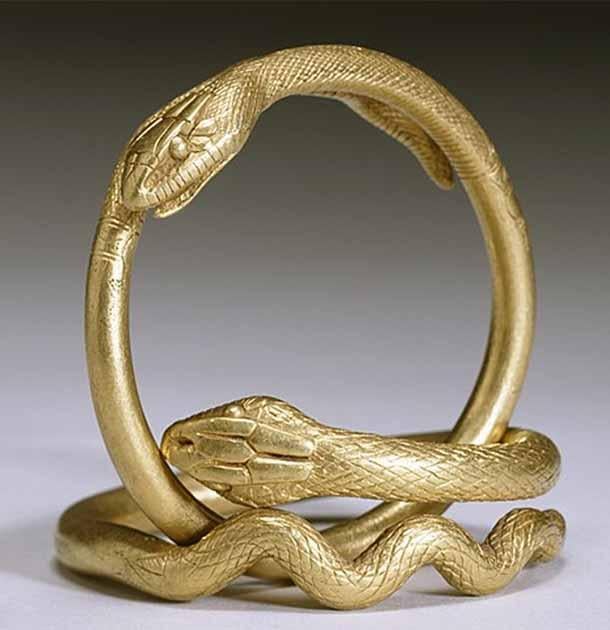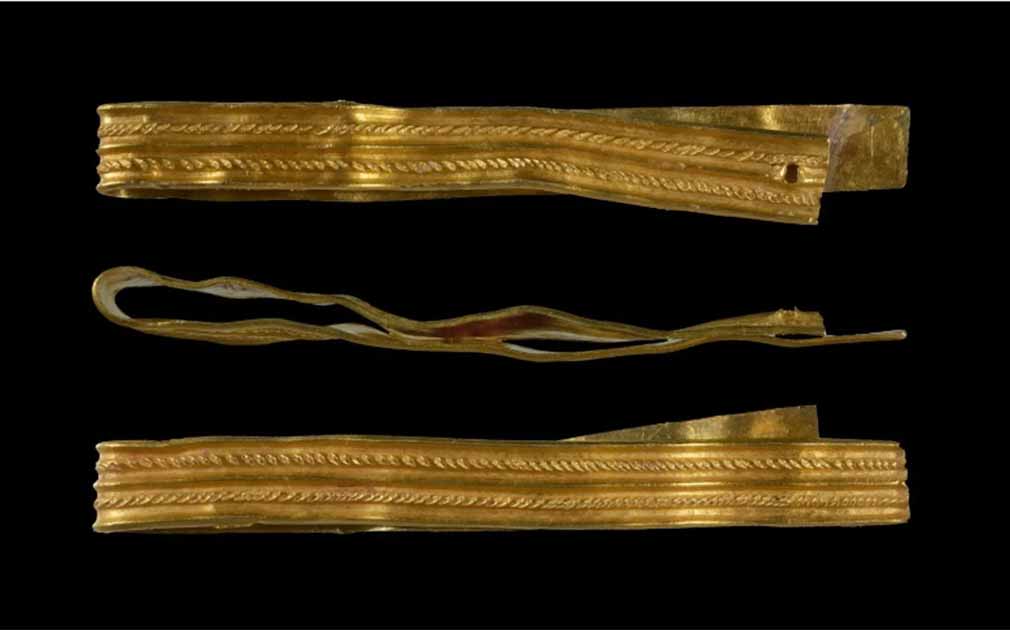12-Year-Old Boy Finds Gold Roman 'Armilla' Bracelet During a Walk
Nearly 2,000 years after it was laid in a field, a Roman-era bracelet has been unearthed by a 12-year-old boy during a routine walk in England’s Sussex region. This exceptionally rare gold Roman bracelet dating back to the first century was initially not recognized as a valuable artifact, but with the support of the local community, this soon changed. This Roman bracelet of the ‘armilla’ type is particularly fascinating as they were conferred upon men to grant them a military distinction, thus worn as a mark of honor.
- The Hoxne Hoard: How a Mislaid Hammer Led to the Largest Roman Treasure in Britain
- Marie Antoinette’s Diamond Encrusted Bracelets Will Sell For Millions
A Walk of Great Significance – Locating the Armilla
12-year-old Rowan was accompanied by his mother, Amanda, 44, who’s wary of Rowan’s habit of picking things off the floor. “Rowan has always been into finding all sorts of bits and pieces, he's very adventurous and is always picking stuff up off the floor. I'm forever saying "put it down, it's dirty" - but on this occasion he kept holding this bit of metal, convinced that it was actual real gold. I thought it was just some strapping from a fence or something - it was very dirty,” she quipped to The Daily Mail.
The armilla type cuff bracelet served as a distinguished military decoration, known as a ‘ donum militarium’, awarded to soldiers of ancient Rome for acts of conspicuous gallantry. Eligibility for an armilla extended to Roman legionnaires and non-commissioned officers below the rank of centurion. These bracelets were proudly worn during military parades and Roman Triumphs, symbolizing the valor and achievements of the recipients while publicly commemorating the success of a military commander.
- Stone bracelet is oldest ever found in the world
- After 20 Years, Amateur Metal Detecting Friends Find the Oldest Iron Age Gold Jewelry in Britain

12-year-old Rowan's determination resulted in the recognition of the treasure's genuine worth. (Portable Antiques Scheme/CC BY 4.0)
As per the Portable Antiques Scheme, the bracelet is described as a folded strip of sheet gold featuring five raised parallel mouldings adorned with rib and rope styles. Notably, there are visible file marks and a circular piercing made at one end, originating from the back and extending through to the front.
After some confusion identifying the nature of the find, Rowan and Amanda promptly reported the find to the local Finds Liaison Officer. Following this, archaeologists thoroughly examined the object and confirmed its authenticity as a genuine piece of ancient Roman gold jewelry. Rowan has been receiving updates every few weeks, much to his excitement!
“We took it to the jeweler and that got me a bit excited, and when it was sent away and it was like "gold" and then it got more exciting. Then it got to the treasure process,” he said excitedly.
Pagham: A Roman Garrison of Repute
The location of Pagham, the borough where the find was made, holds significance, situated in close proximity to the Romano-British city of Noviomagus Reginorum, known today as Chichester; Noviomagus Reginorum served as the capital of the Civitas Reginorum.
Noviomagus Reginorum traces its origins back to its establishment as a winter fort for the Second Augustan Legion in the aftermath of the Roman invasion in AD 43. Initially serving as a military outpost, the fort was manned for a brief period before evolving into a thriving Romano-British civilian settlement within the territory of the Atrebates tribe, known for their amicable relations with the Romans.
Over time, Noviomagus Reginorum transitioned from a military stronghold to a bustling urban center, reflecting the Roman Empire's influence and the integration of local communities into the broader Roman cultural and economic framework. This transformation speaks to the dynamic nature of Roman expansion and its impact on the indigenous peoples of Britain, resulting in the establishment of vibrant urban settlements like Noviomagus Reginorum.
Bracelets During the Roman Empire: Gender Politics
During the Roman Empire, bracelets were predominantly worn by women as symbols of social status. Conversely, men typically refrained from wearing bracelets due to societal perceptions associating them with effeminacy.
However, there were exceptions to this norm. Armilla bracelets, a specific type of bracelet, held special significance among men. These bracelets were not worn for ornamentation but were rather bestowed as prestigious honors. They were publicly conferred by Roman generals to soldiers who had performed exceptional acts of bravery or merit in service to the empire, reports The Heritage Daily.

In the ancient Roman world, bracelets like this snake design were often worn in pairs, around the wrists as well as on the upper arms. (Public Domain)
Armilla bracelets were not merely decorative; they served as tangible symbols of honor and valor. Being awarded an armilla bracelet was a public recognition of one's extraordinary achievements in the military sphere, and wearing such a bracelet was a mark of distinction and pride.
These bracelets were typically made of precious metals like gold or silver and often featured intricate designs or inscriptions commemorating the deeds for which they were awarded. As such, armilla bracelets held immense cultural and symbolic significance within Roman society, representing not only individual bravery but also the military prowess and honor of the empire as a whole.
Top image: Gold Roman 'Armilla' Bracelet dates back to 2,000 years. Source: Portable Antiques Scheme/CC BY 4.0
By Sahir Pandey
References
Fletcher, M. 2024. Talk about striking gold! Boy, 12, discovers a 2,000-year-old gold Roman bracelet in a field in Sussex. Available at: https://www.dailymail.co.uk/sciencetech/article-13271375/Boy-discovers-gold-Roman-bracelet-Sussex.html.
Milligan, M. 2024. Ornate Roman bracelet found near Pagham. Available at: https://www.heritagedaily.com/2024/04/ornate-roman-bracelet-found-near-pagham/151368.
Preston-Ellis, R. 2024. Boy, 12, finds rare 2,000 year old gold Roman bracelet lying in field during dog walk. Available at: https://www.mirror.co.uk/news/uk-news/boy-12-finds-rare-2000-32509817.

















